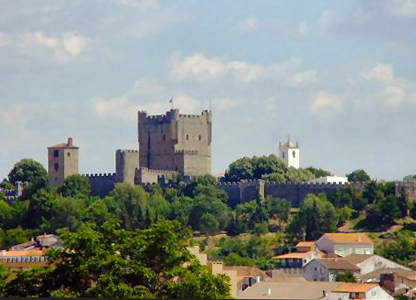
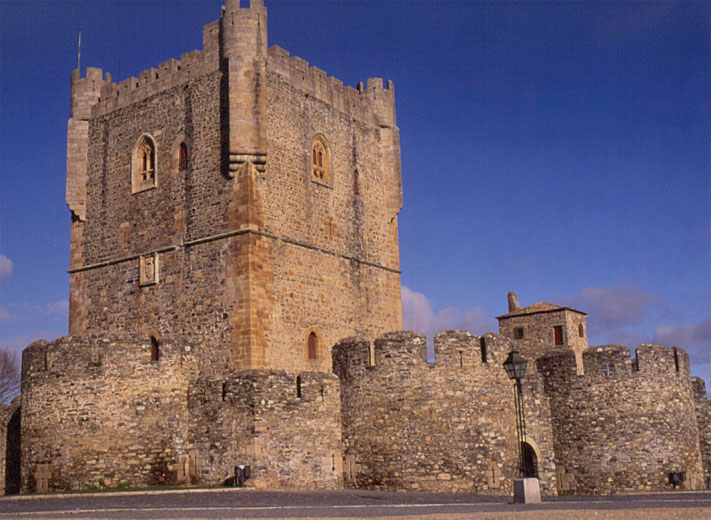
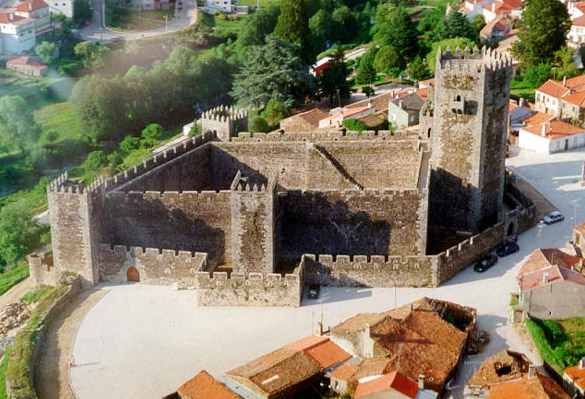
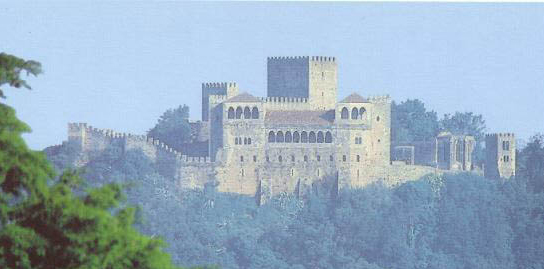
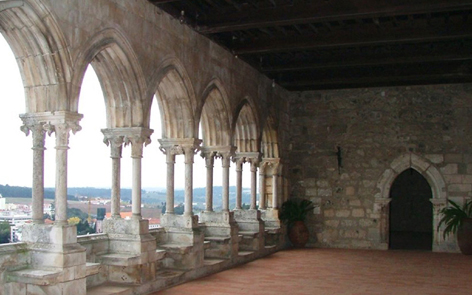
Index
| Castles and Palaces - 3 | ||||||||||||||||||||||||||||||||||||
| The city and castle of Bragan�a, near the border with Castille, were founded towards the end of the 12th century by Sancho I, second Portuguese king, at a time when it was important to guard and promote the colonisation of the limits of the kingdom. In the first decades of the 15th century, King John I ordered the construction of a new wall with circular towers and a new keep, which is the highlight of the castle with its gothic windows and bastions. | ||||||||||||||||||||||||||||||||||||
 |
||||||||||||||||||||||||||||||||||||
| Right - View of Bragan�a. The old nucleus of the town is still enclosed in its mediaeval walls and is dominated by the castle keep. | ||||||||||||||||||||||||||||||||||||
 |
||||||||||||||||||||||||||||||||||||
| Left - The gothic keep has four bastions at each corner allowing for an improved firing angle to the defenders. A low wall with circular towers (barbican) surrounds the keep. | ||||||||||||||||||||||||||||||||||||
| Another important castle near the border with Castille is the one at Sabugal, near the river Coa. At first, the town belonged to the kingdom of Leon, but was conquered for Portugal in 1296 by king Dinis I, who ordered the building of the current castle and city walls. | ||||||||||||||||||||||||||||||||||||
 |
||||||||||||||||||||||||||||||||||||
| Up - Sabugal castle has a rectangular shape with towers at three corners and a barbican that surrounds the whole castle. The keep, seen on the right, is pentagonal and has openings with stone parapets. These parapets have openings on the floor, called machicolations (mata-caes), that were used to throw stones or liquids on the enemy. There used to be buildings and a church inside the castle, but these have been demolished. | ||||||||||||||||||||||||||||||||||||
| The castle of Leiria, near Lisbon, is a good example of the transformation of a rough fortress into a palace. The city was founded by the first king of Portugal in the 1135. A typical citadel with a keep was built by king Dinis I in the early 14th century but, at the turn to the 15th century, king John I ordered the construction of a palace with spacious rooms, mosaic floors and galeries (loggias) to admire the surrounding landscape. In the 15th century, many important administrative gatherings (Cortes) were held here. It was just a ruin in the 20th century but was rebuilt based on existing remains and old images. | ||||||||||||||||||||||||||||||||||||
 |
||||||||||||||||||||||||||||||||||||
| Up - General view of Leiria Castle. The gothic palace of king D. John I was built partially over the walls of the preexisting castle. Its most characteristic features are the gothic loggias overlooking the town, which give a mediterranean flavour to the palace. On the background, behind the palace, one can see the early gothic citadel renovated by king Dinis I with its massive keep, dating from 1324. To the right there are the remains of the late gothic church of Saint Mary of the Rock (Santa Maria da Pena) and a tower that overlooked the entrance to the castle and served to keep the falcons used by the nobility in hunting excursions. | ||||||||||||||||||||||||||||||||||||
 |
||||||||||||||||||||||||||||||||||||
| Left - View of the central gallery and loggia of Leiria Castle. This gallery separated the royal rooms, which were at each extreme of the gallery (the entrance to one is seen in the picture). These loggias and rooms were in ruins and had to be rebuilt in a 20th century renovation. | ||||||||||||||||||||||||||||||||||||
| Page 4 Index |
||||||||||||||||||||||||||||||||||||